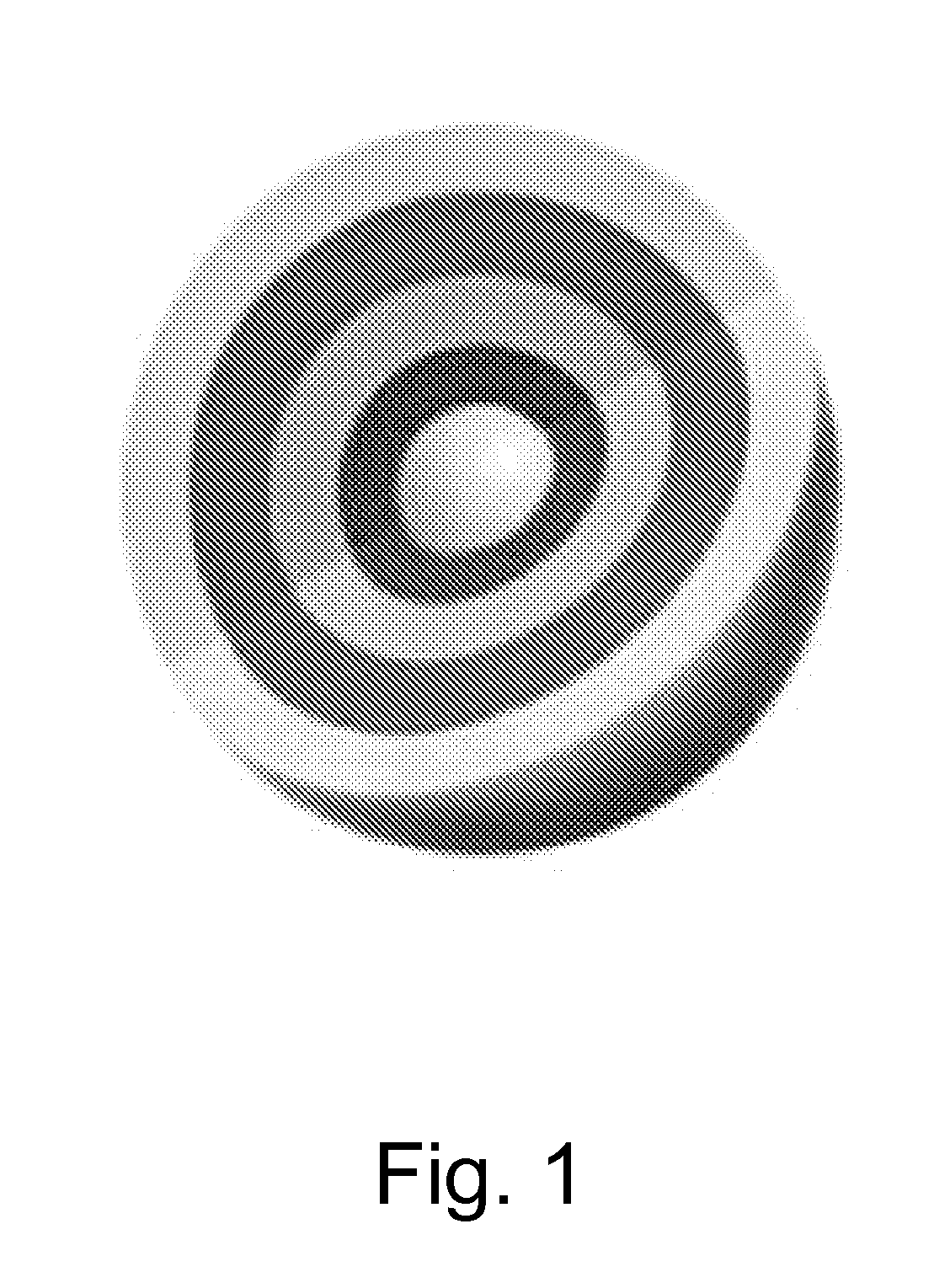Heat resistant probiotic compositions and healthy food comprising them
a technology of probiotic compositions and healthy food, applied in the field of health food products, can solve the problems of near sterilization of products, and achieve the effect of increasing the stability of bacteria
- Summary
- Abstract
- Description
- Claims
- Application Information
AI Technical Summary
Benefits of technology
Problems solved by technology
Method used
Image
Examples
example 1
Materials
[0024]
Materials:Function:LactobacillusacidophilusA Probiotic bacteriaBifidobacteriumA Probiotic bacteriaMicrocrystalline cellulose (MCC)Core substrateMaltodextrinSupplement agent for the bacteriaTrehaloseSupplement agent for the bacteriaHydrogenated vegetable oilFirst coatin layer agentEthylcellulose E100Second coating layer polymerSodium alginateSecond coating layer polymer andheat-resisting polymerCalcium chlorideHeat-resisting component (cross-linking agent)
Method
1. Absorption of Bacteria on Microcrystalline Core Substrate
[0025]Lactobacillus acidophilus and Bifidobacterium were absorbed on MCC substrate based on a ratio of 38:62 respectively. For this purpose an aqueous-based suspension of 30% of the bacteria and maltodextrin and trehalose was prepared. The concentration of bacteria was about 15% (w / w) in that suspension. The absorption process was carried out at an outlet temperature <35° C.
2. The First Coating Layer Using a Hydrogenated Vegetable Oil
[0026]The coating w...
example 2
Materials
[0029]
IngredientsFunctionLactobacillusacidophilusA Probiotic bacteriaBifidobacteriumA Probiotic bacteriaMicrocrystalline cellulose (MCC)Core substrateMaltodextrinSupplement agent for the bacteriaTrehaloseSupplement agent for the bacteriaHydrogenated vegetable oilFirst coating layer agentHigh viscosity sodium alginateSecond coating layer polymerChitosanHeat-resisting polymerHydrochloride acid (HCl)pH-adjusting agent
Method:
1. Absorption of Bacteria on Microcrystalline Core Substrate
[0030]Lactobacillus acidophilus and Bifidobacterium were absorbed on MCC substrate based on a ratio of 38:62 respectively. For this purpose an aqueous-based suspension of 30% of the bacteria and maltodextrin and trehalose was prepared. The concentration of bacteria was about 15% (w / w) in that suspension. The absorption process was carried out at an outlet temperature <35° C. in order to avoid the exposure of bacteria to high temperatures and thus high-temperature damage.
2. The First Coating Layer U...
example 3
Materials
[0034]
IngredientsFunctionLactobacillusacidophilusA Probiotic bacteriaBifidobacteriumA Probiotic bacteriaMicrocrystalline cellulose (MCC)Core substrateMaltodextrinSupplement agent for the bacteriaTrehaloseSupplement agent for the bacteriaHydrogenated vegetable oilFirst coating layer agentLow viscosity sodium alginateSecond coating layer polymerChitosanHeat-resisting polymerHydrochloride acid (HCl)pH-adjusting agent
Method:
1. Absorption of Bacteria on Microcrystalline Core Substrate
[0035]Lactobacillus acidophilus and Bifidobacterium were absorbed on MCC substrate based on a ratio of 38:62 respectively. For this purpose an aqueous-based suspension of 30% of the bacteria and maltodextrin and trehalose was prepared. The concentration of bacteria was about 15% (w / w) in that suspension. The absorption process was carried out at an outlet temperature <35° C. in order to avoid the exposure of bacteria to high temperatures and thus high-temperature damage.
2. The First Coating Layer Us...
PUM
 Login to View More
Login to View More Abstract
Description
Claims
Application Information
 Login to View More
Login to View More - R&D
- Intellectual Property
- Life Sciences
- Materials
- Tech Scout
- Unparalleled Data Quality
- Higher Quality Content
- 60% Fewer Hallucinations
Browse by: Latest US Patents, China's latest patents, Technical Efficacy Thesaurus, Application Domain, Technology Topic, Popular Technical Reports.
© 2025 PatSnap. All rights reserved.Legal|Privacy policy|Modern Slavery Act Transparency Statement|Sitemap|About US| Contact US: help@patsnap.com

